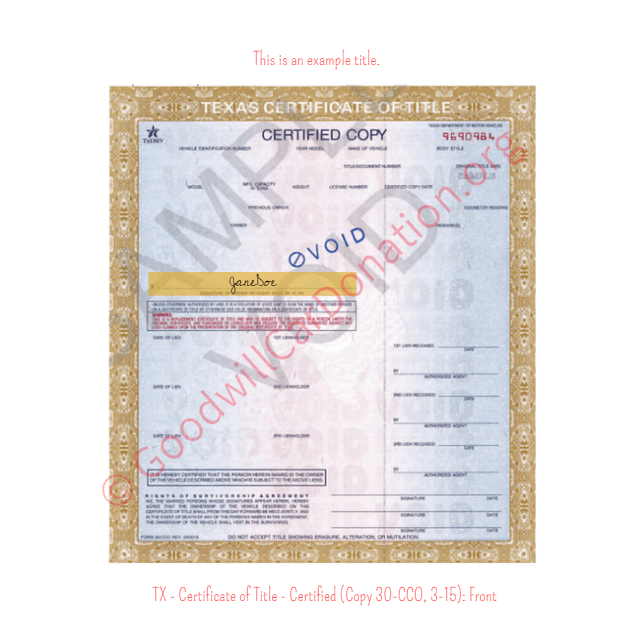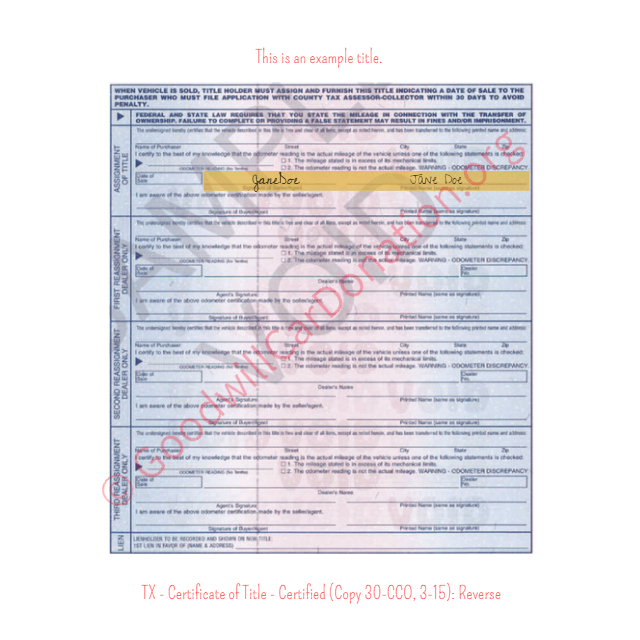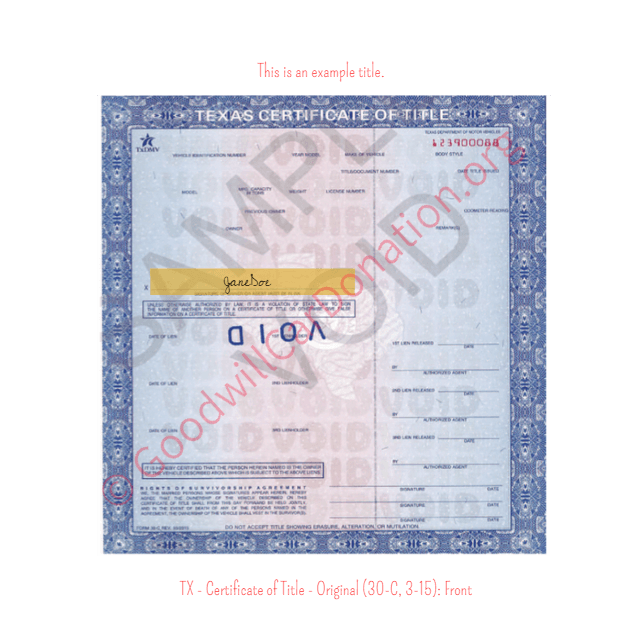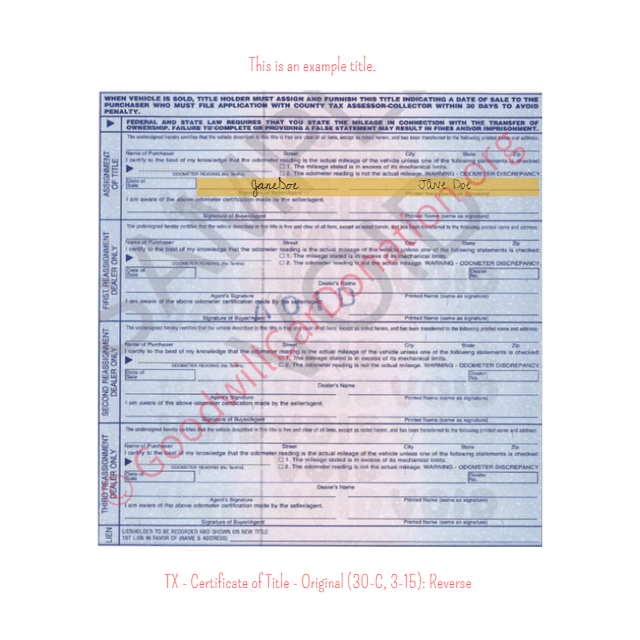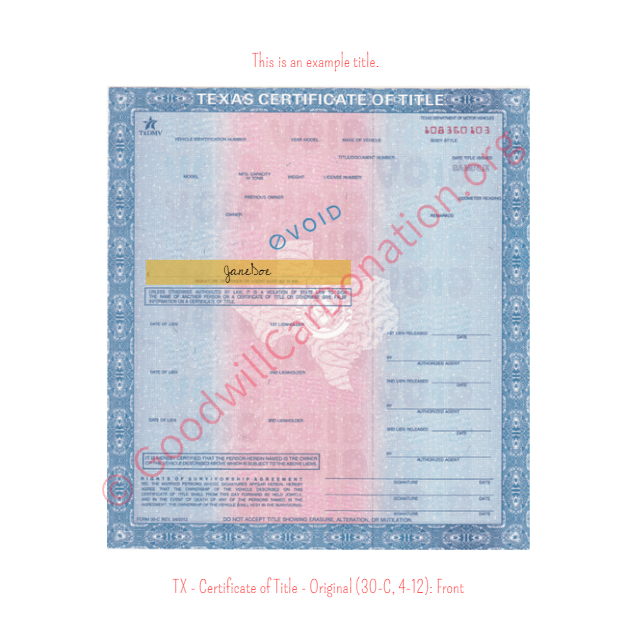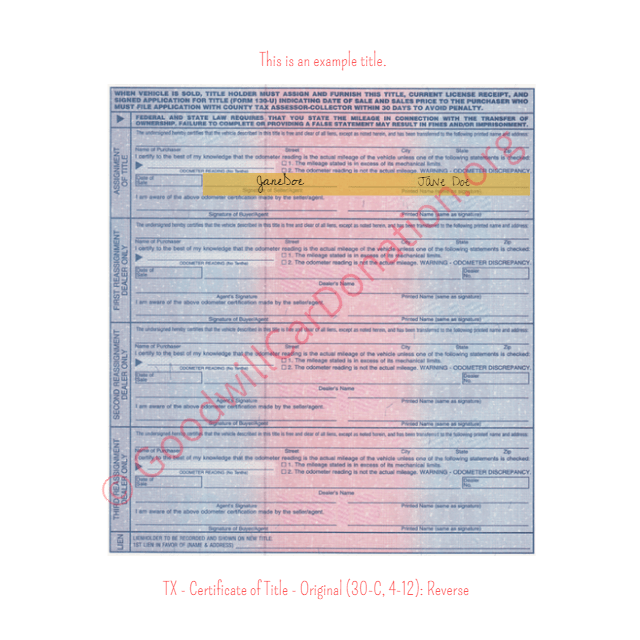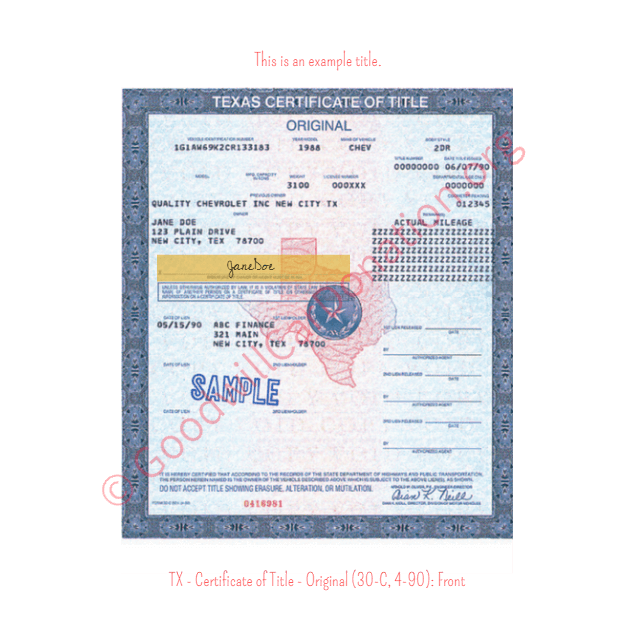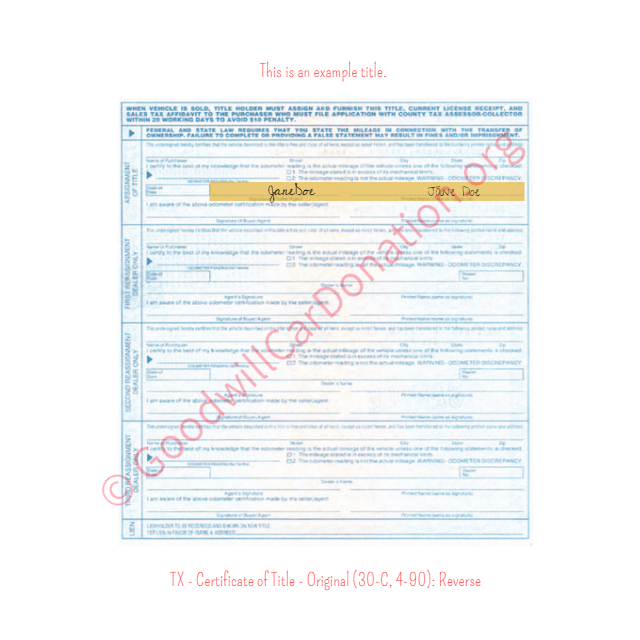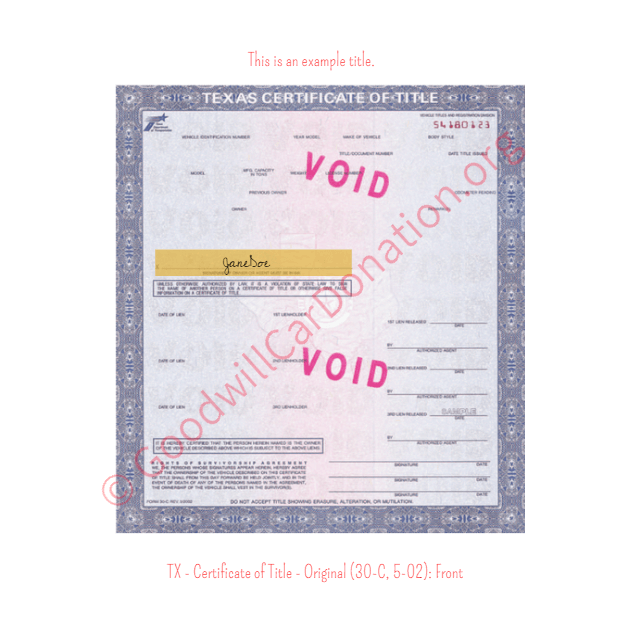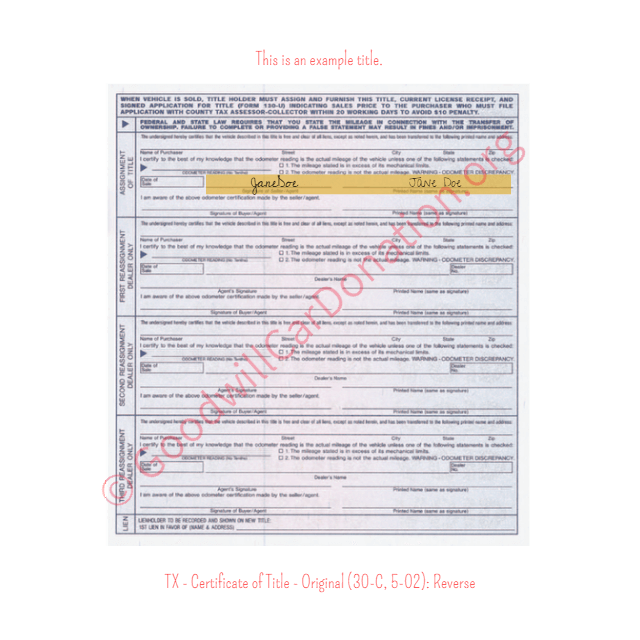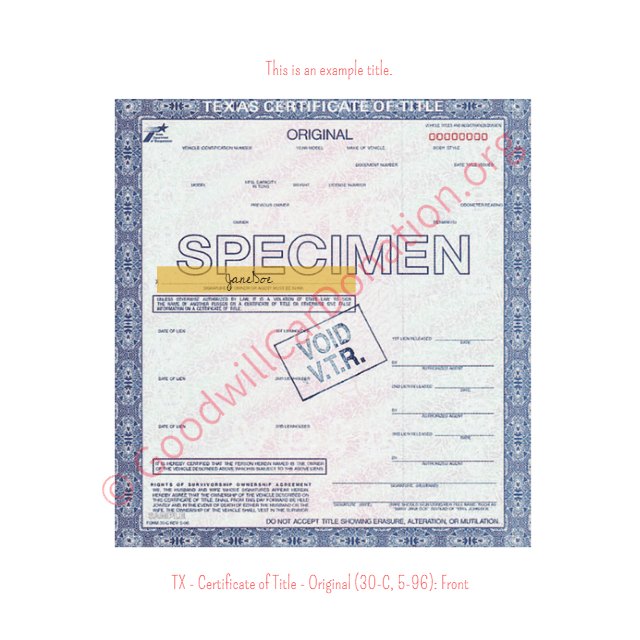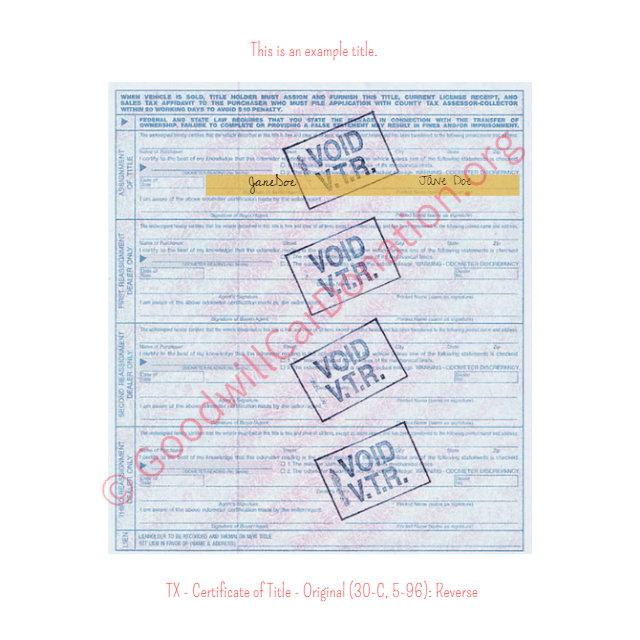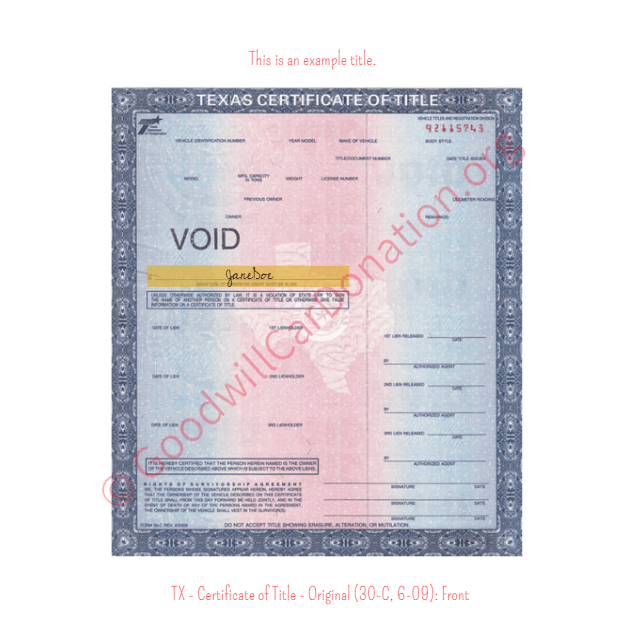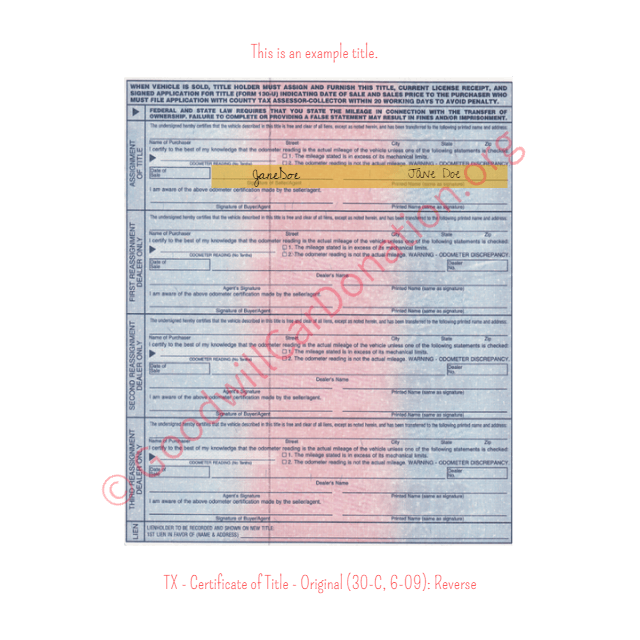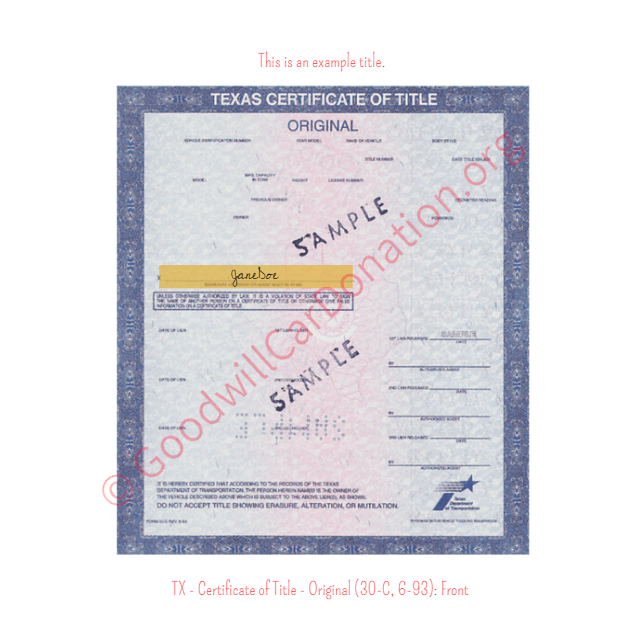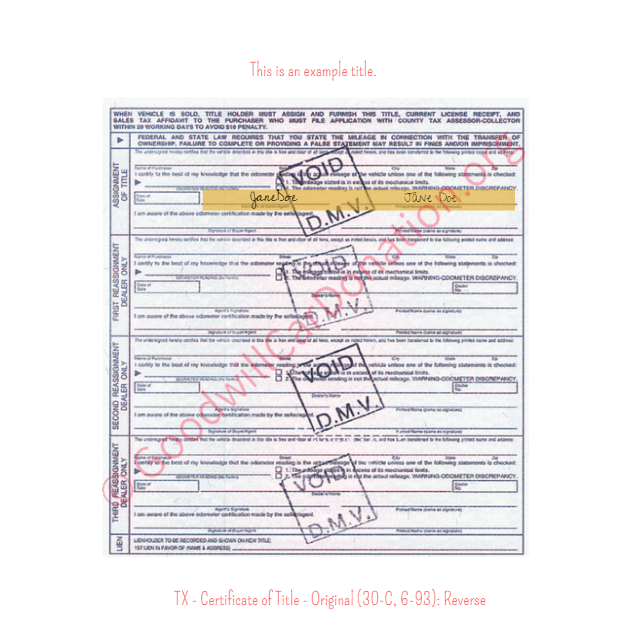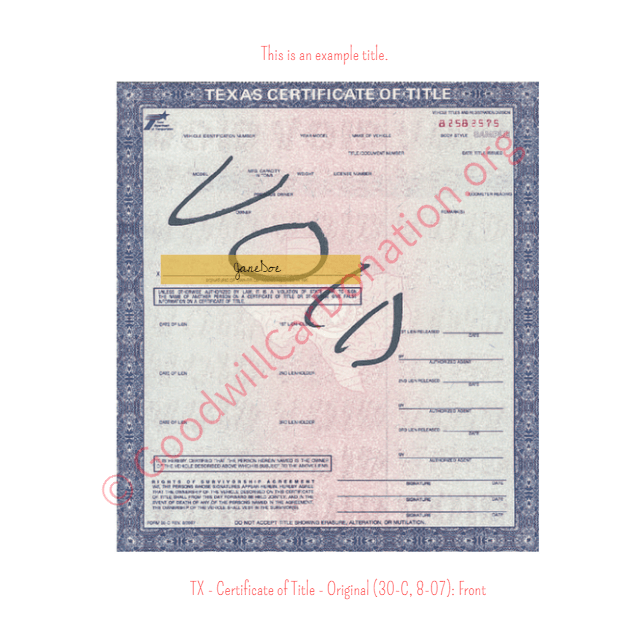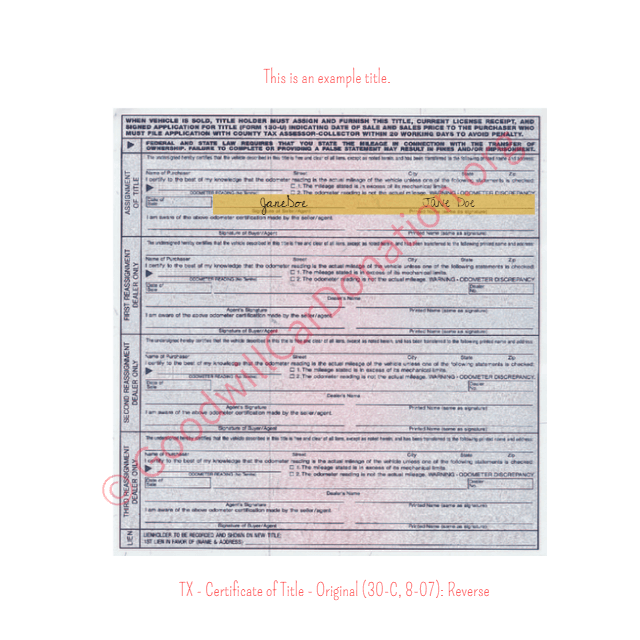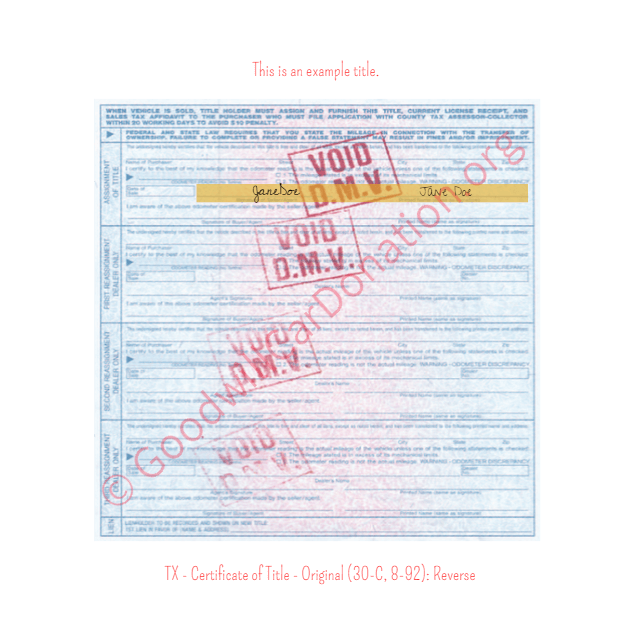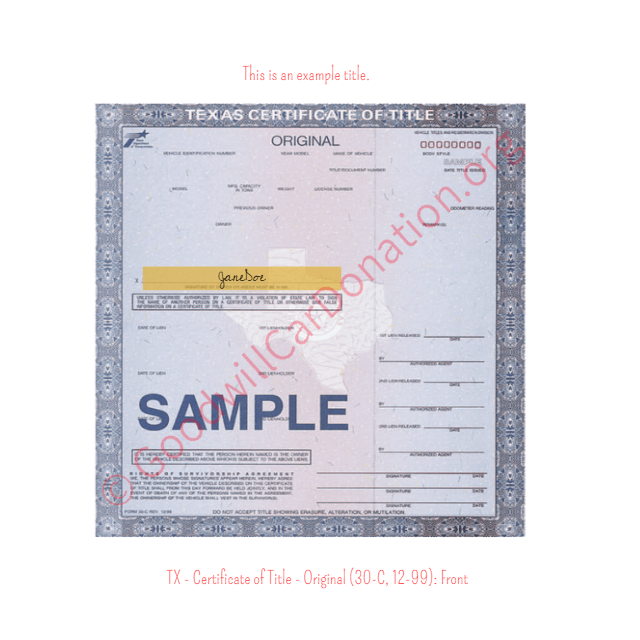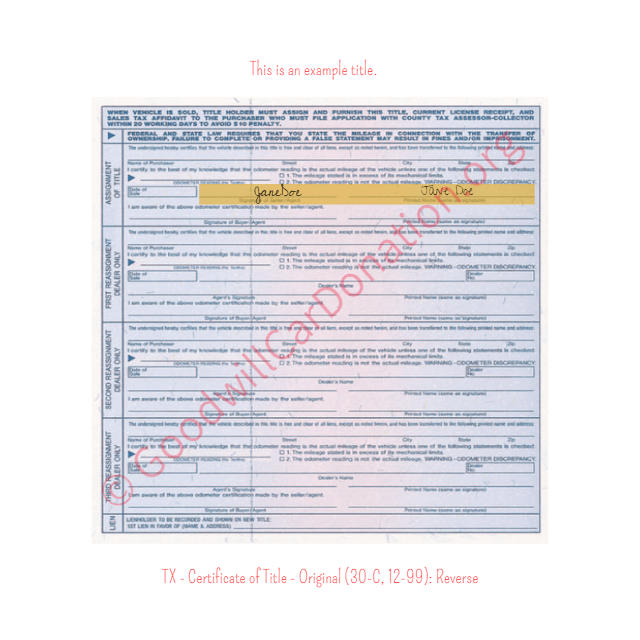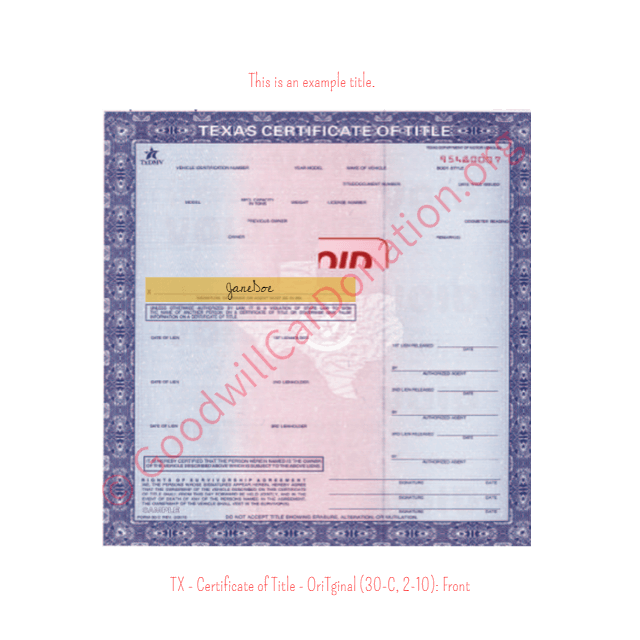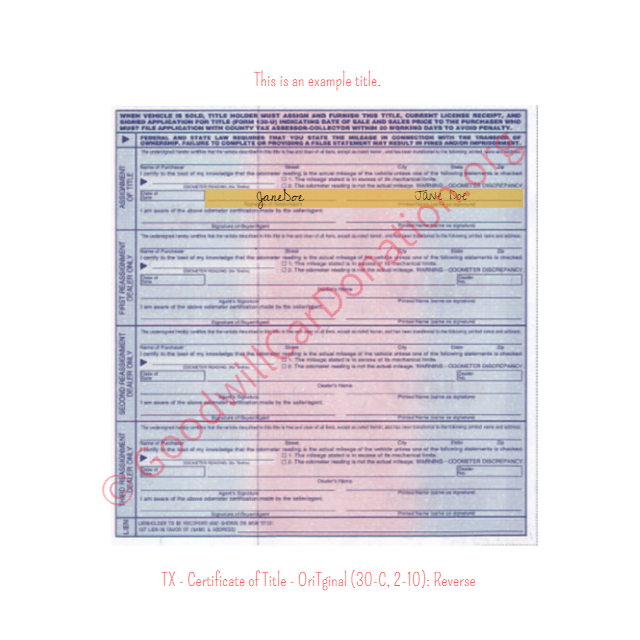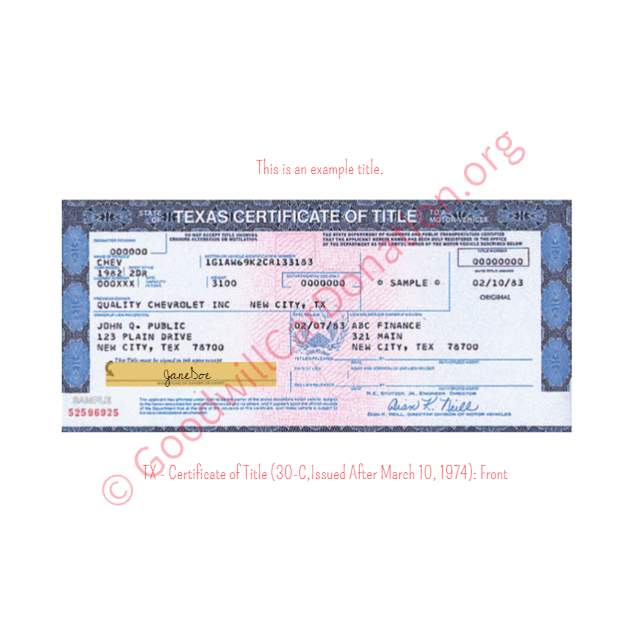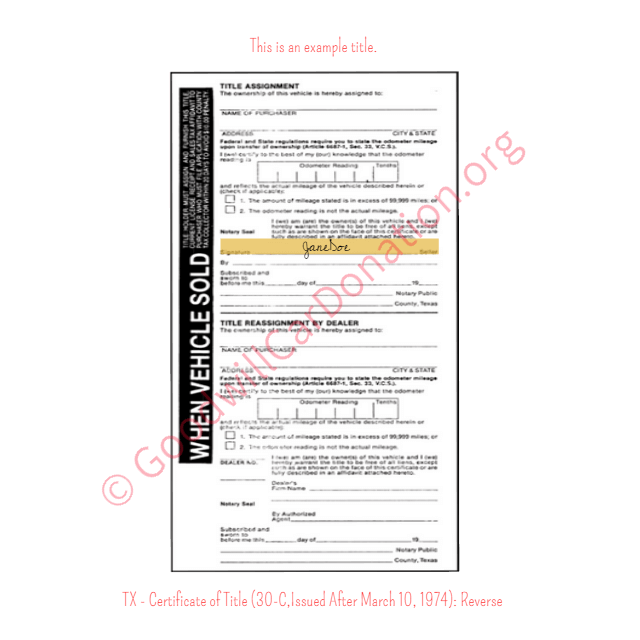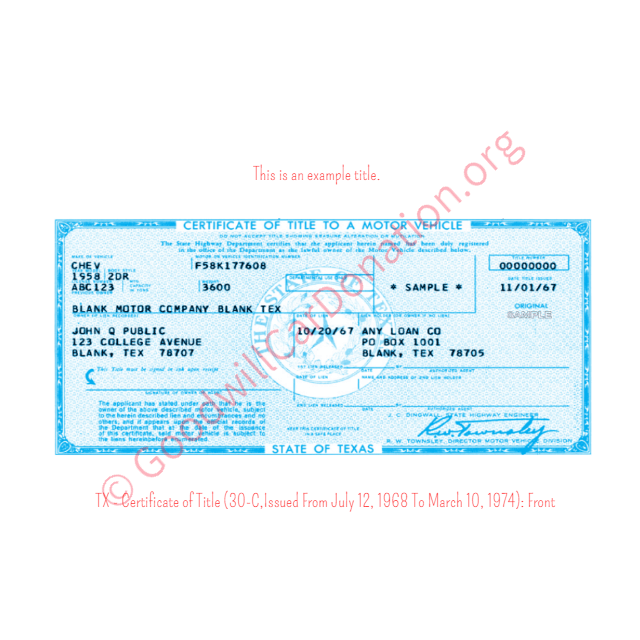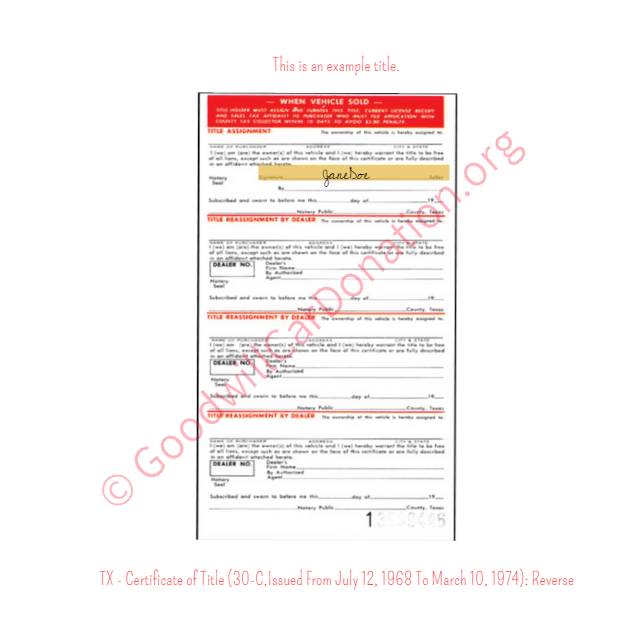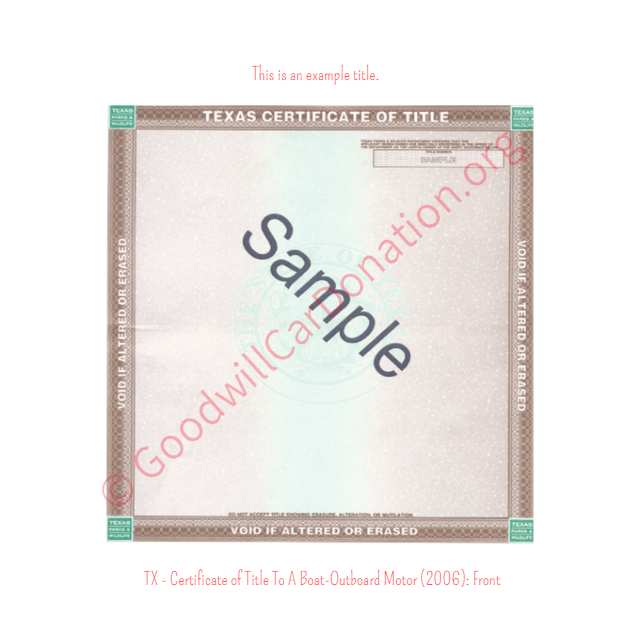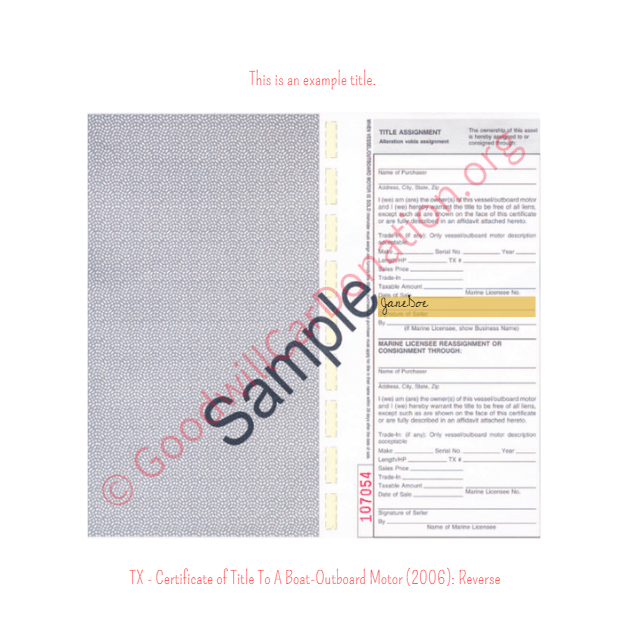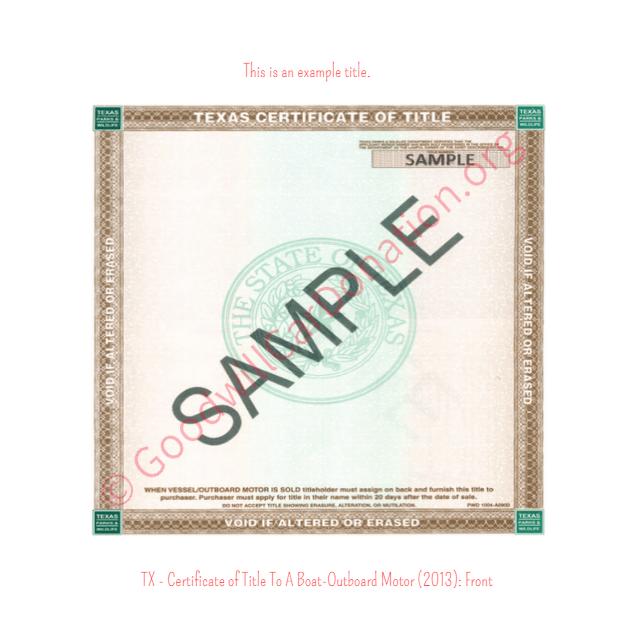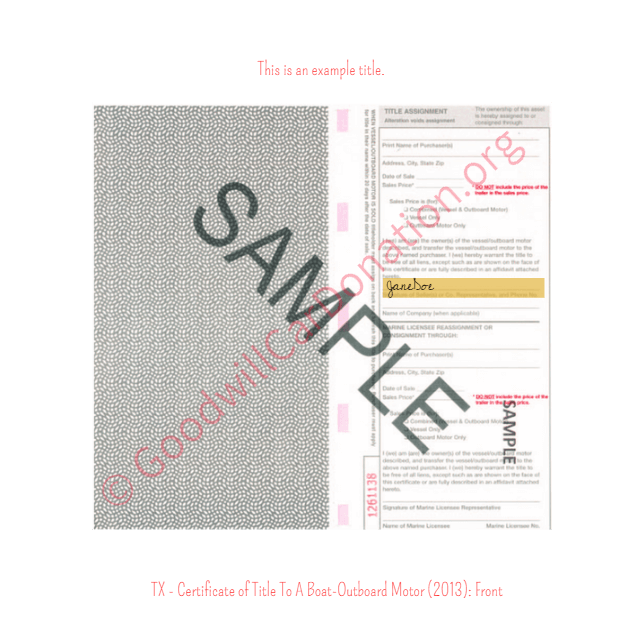How To Sign Your Texas Title
Planning to sign your Texas vehicle title? This step-by-step guide ensures you complete the process correctly from the start. It’s important to know where your signature should go, what writing tool is best and which mistakes could cause delays or rejection. If the title has multiple owners, we’ll help clarify who needs to sign and under what circumstances. Plus, we’ve added practical tips and support contact details to assist you along the way. Follow these directions to make your Texas title transfer fast and hassle-free.
The person (or persons)* listed on the front of the title must follow these steps, unless otherwise noted:
- Texas titles must be notarized. Only sign the title in the presence of a notary public.
- Sign your name (or names)* on the back of the title where it says “Seller(s) Signature(s)”.
- Print your name (or names)* on the back of the title where it says “Seller(s) Hand Printed Name(s)”.
To help with your donation and ease the Texas vehicle title transfer process, we have showcased the various Texas vehicle titles below as well as annotated on each title where to print and sign your name. To enlarge an image, simply click on the image. Texas title transfer questions? Give one of our friendly Title Clerks a call at (866) 233-8586.
Note: Actual title designs may vary slightly from the images shown above.
Official Texas Government Links & Contact Info
- County Title Offices
- Obtain Vehicle Specific Information
- Unclaimed/Abandoned Vehicles
- Vehicle Title FAQs
- Vehicle Title Forms
Contact the Texas Department of Motor Vehicles: (888) 368-4689
Contact the Texas Department of Motor Vehicles – Title Division: (888) 368-4689
Texas Vehicle Titles: How To For Multiple Owners
If there is more than one owner listed on the title, one or both must sign it depending on how the names appear. See the below chart for details.
Remember, the name used to sign the title must match the name shown on the title exactly. Therefore, always remember to print/sign your name exactly as it is shown on the title.
|
John Doe OR Jane Doe |
If “OR” is present between the names, only one of the owners must sign the title. |
|
John Doe AND/OR Jane Doe |
If “AND/OR” is present between the names, both owners must sign the title. |
|
John Doe AND Jane Doe |
If “AND” is present between the names, both owners must sign the title. |
|
John Doe Jane Doe |
If there is nothing present between the names, both owners must sign the title. |
Please take note to adhere to the below instructions so as not to void your Texas title.
- Do not use markers or pencils. Only blue or black pen are allowed.
- Do not cross out or strikethrough any text or writing.
- Do not use white-out or similar substance.
- Do not rip, tear, or tape the title.
- Do not doodle on the title.
Still Have Questions? Find Your Answer Below!
What Are the Common Fees Associated with Transferring a Vehicle Title?
In Texas, the base fee for a title transfer is $33, but additional costs may apply depending on the situation. These can include:
- Local county fees (varies by location)
- Sales tax (6.25%) of the vehicle’s purchase price or fair market value
- Late transfer penalties if not filed within 30 days of the sale
- Emission or inspection fees, if due at the time of transfer
Always check with your local County Tax Assessor-Collector’s office to get an exact total.
How Long Does It Usually Take to Complete a Vehicle Title Transfer?
Once all documentation is submitted and fees are paid, it generally takes two to six weeks to receive your new title by mail. If you submit your paperwork in person, the processing time may be slightly faster compared to mail-in applications.
Can I Transfer a Vehicle Title If the Owner Is Deceased?
Yes, but the process varies depending on whether the estate is going through probate.
With probate, the executor of the estate must submit court documents verifying their authority to transfer the title.
Without probate, if the estate qualifies for a “Small Estate Affidavit” or “Affidavit of Heirship,” these can be used along with the title and a completed Form VTR-262. Additional paperwork may include a death certificate and government-issued IDs of the heirs.
What Documents Should I Bring When Transferring a Vehicle Title in Texas?
To complete a title transfer in Texas, you typically need:
- The signed title (with buyer and seller signatures)
- Form 130-U (Application for Texas Title and/or Registration)
- Proof of insurance
- Government-issued ID
- Vehicle Inspection Report, if due
- Payment for fees
- Lien release, if applicable
Always verify requirements with your county office, as they may request additional forms or documents.
Are There Any Penalties for Late Vehicle Title Transfers?
Yes. If you fail to transfer the title within 30 calendar days from the date of sale, a $25 late transfer penalty is applied. This fee increases by an additional $25 every 30 days, up to a maximum of $250. Delays can also affect registration and create legal complications, especially if the automobile is involved in an accident or violation.
How Do I Correct Errors on a Vehicle Title Before Transferring?
To fix mistakes on a Texas title (e.g., misspelled name, incorrect mileage), you must complete Form VTR-141 (Statement of Fact for Title Correction), submit any supporting documents (e.g., corrected bill of sale or affidavit) and pay any applicable correction fees. Do not use white-out or cross out errors, as this may void the title.
Can a Vehicle Title Be Transferred Without a Bill Oo Sale?
Yes, while Texas doesn’t mandate a bill of sale, it is strongly recommended as proof of transaction. However, the following are still required:
- Signed title
- Form 130-U
- Payment of fees
In disputes over purchase price or condition, a bill of sale provides valuable legal protection for both buyer and seller.
What Should I Do If the Vehicle Has a Lien or Loan on the Title?
Before a title can be transferred, any lien must be released. This typically requires a lien release letter from the lender and an updated title reflecting the release (if not already done electronically). Texas uses electronic lien and title (ELT) systems, so the release may be processed digitally. Ensure the lien is cleared in the state’s system before attempting a transfer.
Is It Possible to Transfer a Vehicle Title Online in Texas?
Partially. Texas allows online title transfer services for some transactions (particularly between private parties), using the Texas.gov portal or third-party providers partnered with the state. However, certain circumstances – such as out-of-state titles, deceased owners or lien complications – still require in-person processing at a local tax office.
How Can I Protect Myself from Fraud During a Vehicle Title Transfer?
Follow these steps to avoid fraud:
- Verify the VIN on the title matches the vehicle
- Request a vehicle history report
- Confirm the seller’s ID matches the name on the title
- Use a notarized bill of sale
- Avoid cash-only deals and use traceable payments
- Meet in safe, public locations like police department parking lots
Why Is Donating Your Car a Good Alternative to Selling?
If you no longer need your vehicle or want to avoid the hassle of selling it, donating to a reputable organization like Goodwill Car Donations can be a meaningful and beneficial alternative. One of the key advantages is the potential tax deduction. You may be eligible to deduct the car’s sale value at auction from your taxable income. The process is also highly convenient, with free towing services and minimal paperwork, making it stress-free from start to finish. Beyond personal benefits, your donation supports a valuable cause. The proceeds from your donated van, pickup truck, SUV, sedan, sports car or other vehicle help fund job training, employment services and educational programs within your community. Additionally, even non-working vehicles are often accepted, so there’s no need to worry about costly repairs.
We take donations from all across Texas, including Dallas, Houston, San Antonio, Austin and Fort Worth. Donating your car is not only practical, but also a powerful way to make a positive difference while clearing out a vehicle you no longer use.
Last Updated: July 7th, 2025
